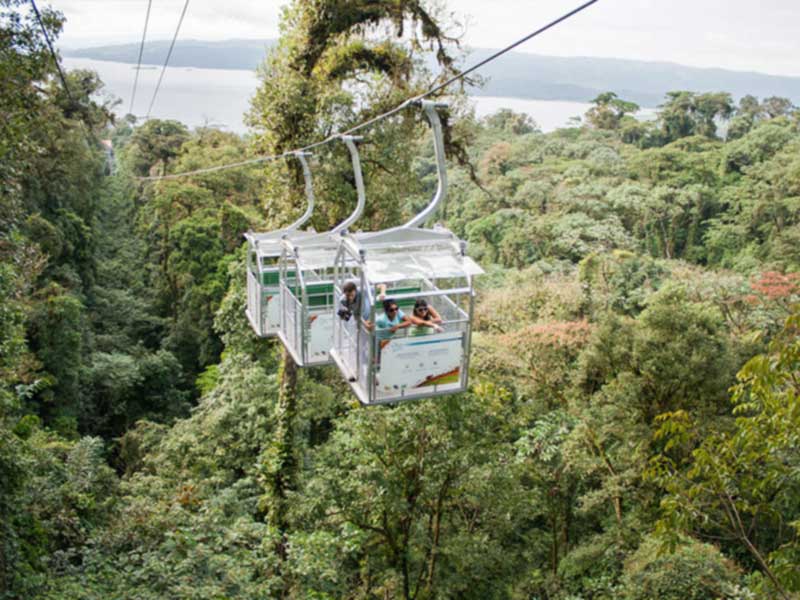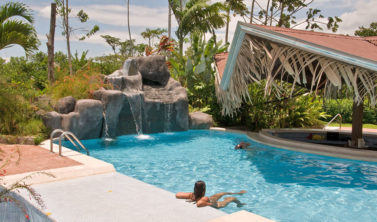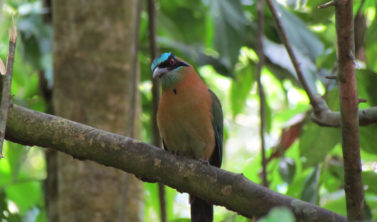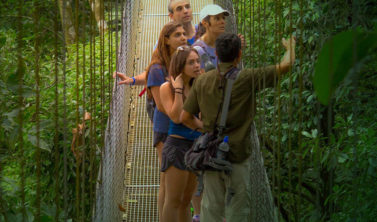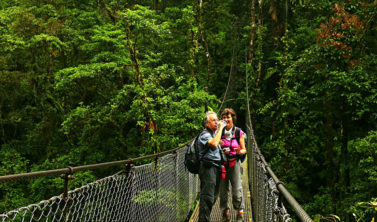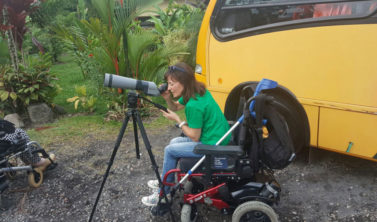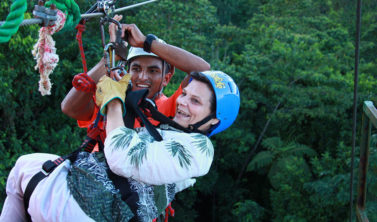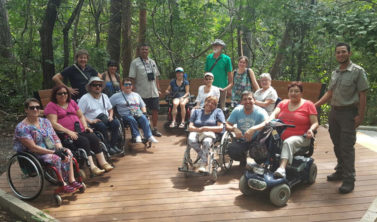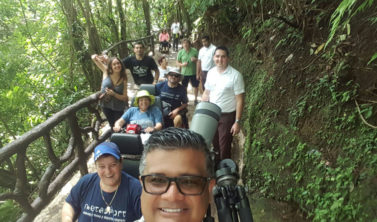Costa Rica
Costa Rica is a destination like no other. With some of the most unique places in the world to visit, this Central American country offers you a wide variety of activities to choose. From times for adventure to relaxation, amazing site seeing, wonders of nature, breath taking sunsets, high waves to ride and calm beaches where to relax. This is the place for the traveler that wants to explore, discover and be one with nature.
Costa Rica
Costa Rica Accessible
Costa Rica is best known for its wild adventure tours, rugged rainforest and tropical beaches, and is not usually thought of as an accessible holiday destination for wheelchair users. That image is changing however, as Costa Rica’s tourism industry works to make the country’s famous attractions more accessible. More and more tourists are looking to enjoy disabled vacations in in Costa Rica .
Costa Rica offers some of the best terrain for eco-holidays, from stunning and sustainable beach resorts along the Pacific coastline in Jaco to cloud forests high in the mountains teeming with exotic animals. Start your adventure with accessible accommodation in san Jose, then discover what lies beyond the capital.
Along with plenty of accessible accommodation, Costa Rica has many accessible activities and attractions. From the wheelchair accessible parks of Poás Volcano National Park, near the capitol of San Jose, and Carera National Park, not far from Jaco on the country’s Pacific as well as some private parks, like Veragua Adventure Park, to the country’s first official “universal access” trail in the rainforest recently opened at Carara National Park. Carara National Park is near Jacó Beach on the Central Pacific Coast of Costa Rica. Designed for people of all abilities, the trail is made of permeable concrete and provides easy access for persons in wheelchairs and elderly visitors, with special ramps and wheelchair accessible bathrooms.
Key information
Health
The health care system in Costa Rica is very good, both private and public. The general health conditions of the country are very good although they have seen small pockets of dengue, chikungunya and Zika. Basic vaccines for hepatitis A and B are recommended, as well as rabies and tetanus, before making the trip. The government of Costa Rica requires the yellow fever vaccine when traveling from countries in Africa, Venezuela, Colombia, Ecuador and Brazil. The vaccine must be administered at least 10 days before the start date of your trip.
Tap water is potable across the country. However, it is recommended that visitors drink bottled water while in the Caribbean to avoid motion sickness, which can affect the quality of your trip.
Always bring repellent against insects, to use whenever necessary.
Wash your hands with soap and water several times a day, especially after using public transportation and visiting attractions with a great movement of people.
Avoid consuming foods that have been poorly prepared or packaged.
During cycling or hiking trips, take foods that can be keep without refrigeration and that don’t spoil with the heat. The main cause of the increase of microcephaly in babies, being a reason for concern mainly among pregnant women and women who plan to become pregnant in the next few months. Regardless of the destination or season, all pregnant women should consult their physicians before travelling.
Pregnant women are advised to use only drugs prescribed by health professionals, take qualified prenatal examinations for their current stage, in addition to reporting any changes during pregnancy. In addition to the use of insect repellent and long-sleeved clothes, it is also recommended to avoid accumulating stagnant water in places such as buckets, vases, old tires, ect.
Security
Costa Rica is a safe country, but there are cases of theft in several parts of the country, especially in tourist areas, so it is advisable to be alert at all times, do not leave your belongings unattended, avoid walking down the street late at night without company, and avoid entering sites that seem unsafe. As a general rule, do not bring valuable belongings or of high sentimental value that can be lost or stolen. The Costa Rican Tourism Board, in conjunction with the police, have created a subdivision titled tourist police with more than 250 officers, whose primary purpose is to maintain order and security in tourist areas. If you have any questions or concerns, you can seek them.
- Upon arriving at the airport, look for registered cabs.
- Whenever you need to open your wallet in public, avoid exposing big cash notes.
- Do not place your wallet or your phone in the back pockets of your pants, especially in places that are very busy and full.
- Do not carry large amounts of cash in your wallet, purse or bag. Take only small amounts in the country’s currency for daily expenditures.
- If you have to take a lot of money, keep it in bags used inside your clothing, closed with zippers or velcro strap and tied with an elastic around your waist.
- Avoid leaving with important documents and, if you have more than one credit card, take only one. In case your credit card gets stolen, you will have another card for future spending.
- Leave your passport where you are staying and take only a certified copy of it.
- Use the safe where you are staying, if the place has one, to keep your money, original passport, credit cards and other important items.
- Most thefts occur in places where there are large concentrations of people, like markets, subway stations, bus stations and full buses. Luggage theft is also common in airport lounges. Keep an eye out.
- Avoid walking through empty places or neighborhoods indicated as dangerous by the local residents. This advice is especially important in large cities and to people who are travelling alone.
- Be wary of people who offer a ride in a non-registered cab, at the airport or in any other location.
- If you go to the beach, don’t leave your belongings in the sand while you go into the water.
- If you rent a car, don’t leave any luggage or bags visible inside. If this is unavoidable, try to park the vehicle in a safe place, where there is policing.
Documentation
Visas
Costa Rica requires a visa for some countries, so it is advisable to check the list of countries before you purchase your ticket to verify the entry requirements. It is important to check visa requirements according to the country in which the passport was issued, and not necessarily the place of residence.
Anyone who enters the country as a foreigner will be prompted for a return ticket; the time allowed for visiting varies by country of origin as well as the discretion of immigration officer that attends you upon arrival. Once in the country, it is advisable to make a photocopy of the passport with the entry stamp to carry at all times during your stay in Costa Rica instead of carrying your original passport during tours and other activities.
Taxes account for 13% of the purchase and are always included in the final price. In restaurants and hotels, taxes and services are included in the final price; however, if you were happy with the service and would like to leave a gratuity, it would be welcome. Since 2016, the country’s departure tax is included in most of the inexpensive airline tickets. For those plane tickets where it is duly stipulated that they do not include the departure tax, you must oay $29 per person, either in dollars, colones, credit or debit card.
Weather
Costa Rica’s two seasons are the dry “summer” (verano) – January through April and rainy “winter” (invierno) – May through December. These correspond to the tourism high season and low season. The term “peak season” is often used to describe the two weeks from just before Christmas until after the New Year when special higher pricing is in effect for the holidays.
The descriptions dry and rainy apply most accurately to the beach destinations of Guanacaste and Nicoya in the northwest corner of Costa Rica. The rest of the Pacific side and much of the central mountains follow a similar pattern although with more precipitation in general.
The Caribbean (east) half of the country doesn’t show strong seasonal variation and tends to be rainier year round. It breaks the rules in September and October when the rest of the country is experiencing the heaviest rain and the Caribbean beaches are warm, dry and sunny.
You may have noticed that like the southern hemisphere the names of Costa Rica’s seasons are reversed relative to the U.S.and Canada. While the north is blanketed in snow December through April Costa Rica is enjoying summer.
This can be confusing when you pause to realize that Costa Rica is not in the southern hemisphere, it’s in the northern. Unless you’re working on a degree in atmospheric science, it’s better to just accept this quirk and enjoy it rather than trying to explain it.
The rainy/wet/winter months are known as the “Green Season” for tourism marketing purposes. It sounds way better than rainy.
Language
Spanish in Costa Rica is spoken with a distinctive national accent and employs peculiar usages. Costa Ricans replace the diminutive ending -titowith -tico (hence their nickname), a practice known elsewhere but uncommon in Central America. Descendants of Africans in Limón province speak both Spanish and Limonese Creole, which resembles Jamaican English. The principal Indian languages spoken in Costa Rica are part of the Chibchan language family and include Bribrí, Cabécar, Maléku Jaíka, Boruca, and Térraba.
Electricity
The electrical current used in Costa Rica is 110 volts, AC.
The sockets are American-style, but budget places often don’t have a place for a grounding prong, so bring an adapter.
Appliances whose plugs don’t have grounding prongs should work, but it’s always a good idea to check with your hotel about the voltage before you plug anything in, especially if your lodge uses solar electricity.


